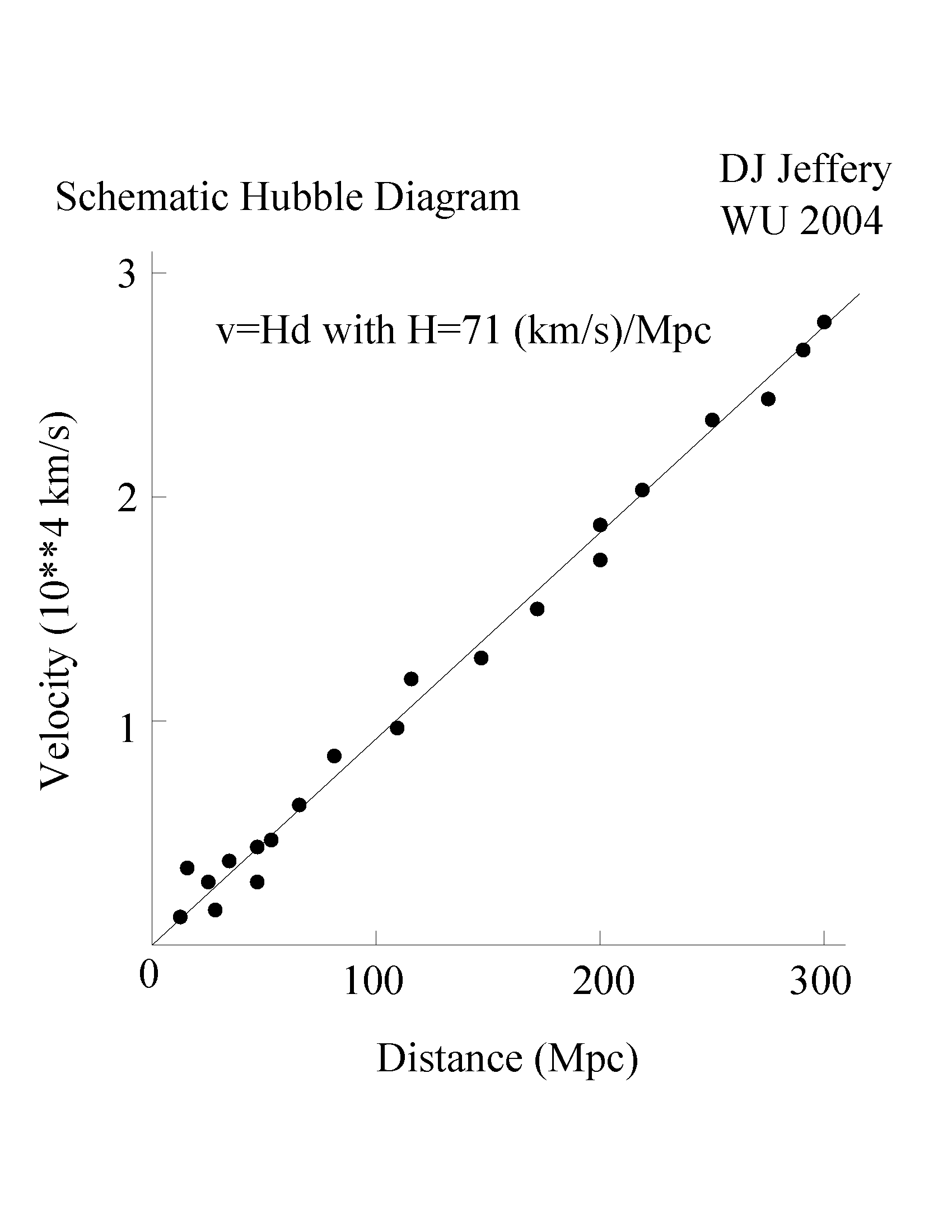
Caption: A cartoon Hubble diagram extending out to ∼ 300 Mpc.
For an explication of the Hubble's law, the Hubble constant, and Hubble diagrams, see Cosmology file: hubble_diagram.html.
The theoretical Hubble's law
of the
FE models
is exact for
exact recession velocities
and cosmological proper distances
measured at one instant
in cosmic time.
The theoretical Hubble's law
was derived and first published by
Georges Lemaitre (1894--1966)
in 1927.
It must have been known to
Alexander Friedmann (1888--1925)
since the early 1920s, but he
NEVER explicitly presented it.
For more on the discovery of the
theoretical Hubble's law,
see Astronomer file:
georges_lemaitre_cartoon.html.
Now an observational
Hubble's law
can be determined observationally in a simple way from a
Hubble diagram
Edwin Hubble (1889--1953) did.
But is that observational
Hubble's law
actually predicted for the local
observable universe?
Our physical intuition says yes, but
is there a definite proof?
by the
theoretical Hubble's law
That Hubble's law
can be determined empirically is proven using
expanding universe models.
The argument is a bit tricky, but here goes.
Luminosity distances
(which we discuss below)
and angular diameter distances
(which we do NOT discuss)
are direct observables.
It can be proven that these "distances" asymptotically approach
the cosmological physical distance
as cosmological redshift z
goes to zero.
This is illustrated in the
cosmological distance measure graphs shown below
(where "luminosity is luminosity distance
and "angular diameter" is angular diameter distance).
The 1st order recession velocity,
given by v_1st=zc, asymptotically approaches the exact
recession velocity
as cosmological redshift z
goes to zero.
This is illustrated in the
cosmological distance measure graphs shown below
since the "naive Hubble" divided by H is
the 1st order recession velocity
and the
cosmological physical distance divided by H
is the exact recession velocity.
Since the direct observable "distances" and the
1st order recession velocity
approach, respectively, the
cosmological physical distance
and the exact recession velocity
asymptotically as cosmological redshift z
goes to zero,
they must asymptotically
satisfy
Hubble's law
(which holds exactly for
cosmological physical distance
and the exact recession velocity)
as cosmological redshift z
goes to zero.
Thus, as long as one observes cosmological objects at sufficiently small
cosmological redshift z,
one can find Hubble's law
and the
Hubble constant
empirically from a Hubble diagram.
For the
Λ-CDM model as seen
in the cosmological distance measure graphs shown below,
z must be less than about 0.5 to be sufficiently small.